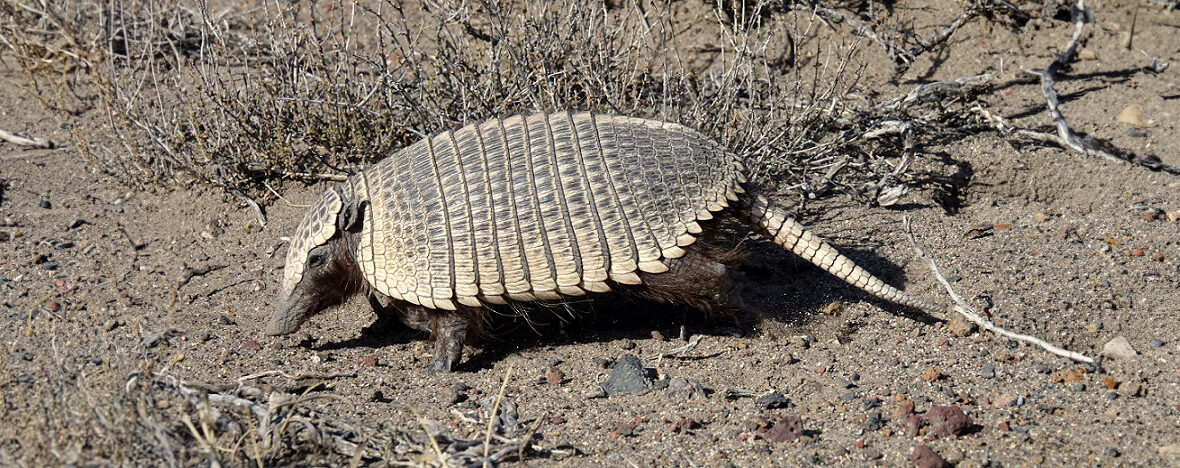
The pinchi, aka dwarf armadillo or pygmy armadillo, is native to Argentina. These diminutive armadillos are among the smallest armadillos, but not as tiny as the pink fairy armadillo. Fossil remains from the Cerro Azul Formation show that this species of armadillo had already evolved during the late Miocene epoch. Facing the threats of habitat loss at the hands of farming and ranching; hunting; trapping; and climate change, which can bring about storms and flooding, these little critters are listed as Near Threatened by the IUCN. Their populations are also decreasing.
First the Stats…
Scientific name: Zaedyus pichiy
Weight: Up to 53 ounces
Length: Up to 11 inches, plus up to a 4.3 inch tail
Lifespan: Up to 9 years
Now on to the Facts!
1.) These are the only known armadillo to hibernate.
2.) They are the only living member of the genus Zaedyus.
3.) Pinchis have well-developed claws on all 4 feet, used for digging burrows and excavating into insect mounds.
4.) The pinchi has 16 teeth on the upper jaw, and 18 on the lower jaw.
5.) The female has 2 teats located at the upper chest region.
But wait, there’s more on the pinchi!
6.) Females also lack a true vagina, instead possessing a single urogenital cavity.
7.) The male’s phallus measures up to 60% of their total body length.
Did you know…?
Even though it is present, standing water is not thought to be consumed, they prefer to get their hydration needs from the foods they eat.
8.) They prefer arid or semiarid steppe grassland habitats. But they will settle for other habitats as long as there is sandy soil for digging.
9.) Beetles, ants, scorpions, mice, moles, lizards, plant material, and fungi are all on the menu.
10.) Crowned eagles, buzzard-eagles, foxes, and cougars all prey on these critters.
But wait, there’s still more on the pinchi!
11.) They hibernate from May – August, and during hibernation, their body temperature drops from 95ºF down to just 57ºF.
12.) Besides the annual hibernation, these critters also engage in torpor (decreased activity), where their body temperature can drop down to 75ºF, for up to 4 hours a night.
Did you know…?
While mostly silent, these armadillos can produce loud grunts, purring sounds, and a loud scream, when threatened.
13.) Females undergo up to a 60 day gestation (pregnancy) that can yield up to 2 pups.
14.) Pups are weaned in up to 40 days, which is when they leave the burrow.
15.) Pinchis are diurnal (active during the day).
16.) When approached by a predator they will retreat to their burrow. If they can’t make it to the safety of their burrow they will flatten themselves out protecting their soft underbelly. These armadillos cannot roll themselves into a ball, like the 3-banded armadillo.
Now a Short Pinchi Video!
This video talks about armadillos in general.
Be sure to share & comment below! Also, check out the Critter Science YouTube channel. Videos added regularly!
Want to suggest a critter for me to write about? Let me know here.
Some source material acquired from: Wikipedia & IUCN
Photo credit: Silvio Montani



